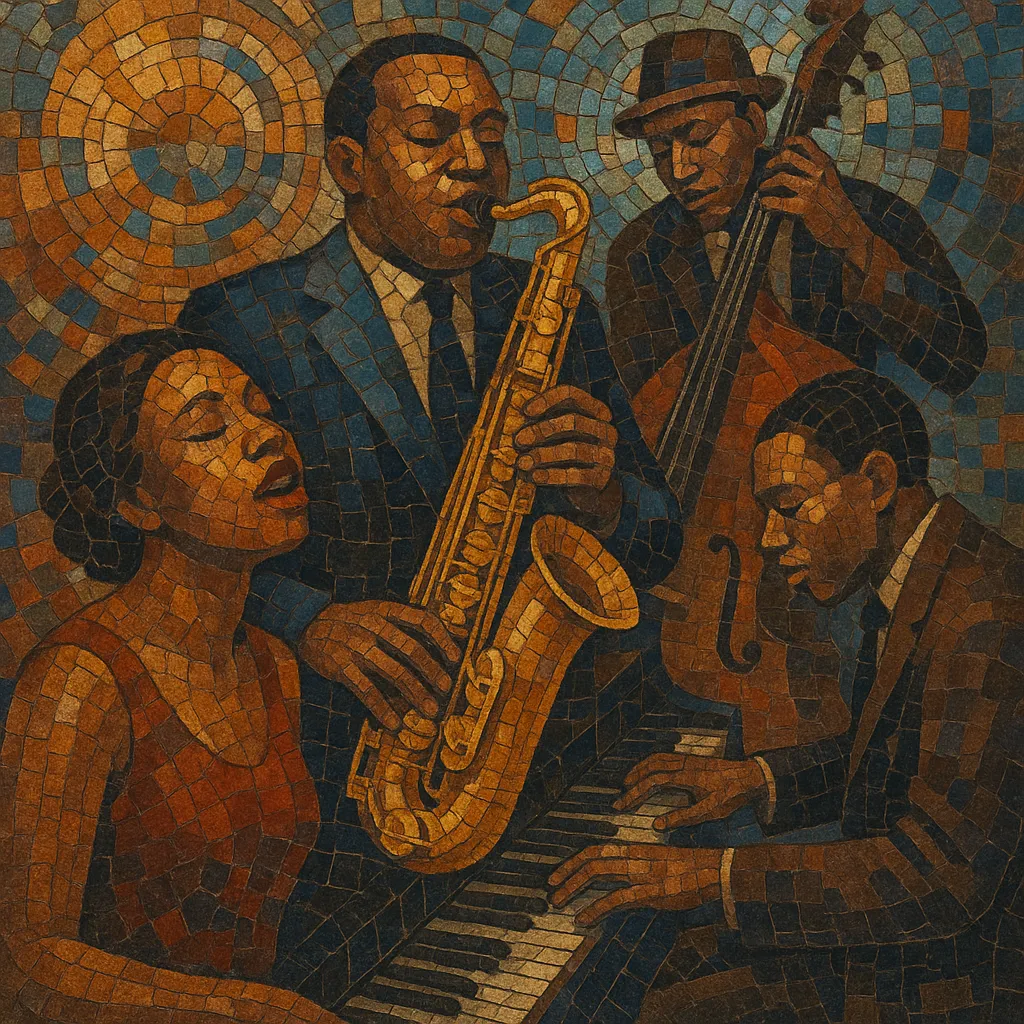
The Harlem Renaissance, as a musical movement within a broader cultural flowering, crystallized in 1920s Harlem, New York City. It brought together jazz, blues, spirituals, popular song, and theatre music into a vibrant urban sound shaped by Black bandleaders, composers, singers, and pianists.
Musically, it fused blues feeling with sophisticated arranging, stride-piano virtuosity, urbane songwriting, and dance-band propulsion. Call-and-response writing, riff-based textures, and blues-inflected melodies met polished Tin Pan Alley craft. The scene thrived in ballrooms and nightclubs like the Cotton Club and the Savoy, on Broadway stages, and at “rent parties,” where stride pianists drove social dancing and innovation.
Beyond entertainment, Harlem Renaissance music signaled modern Black identity and artistry, catalyzing the transition from early New Orleans/Dixieland styles to the big-band swing era and laying cultural groundwork that later enabled bebop and modern jazz.
The Harlem Renaissance emerged in the wake of the Great Migration and World War I, as African Americans moved to northern cities—especially Harlem—seeking opportunity and community. Prohibition-era nightlife, new recording and radio industries, and a dense network of clubs, theatres, and dance halls created the conditions for a concentrated musical boom.
In the early to mid-1920s, Harlem became a hub where blues singers, stride pianists, and rising jazz orchestras converged. James P. Johnson and Willie "The Lion" Smith defined the virtuosic stride piano style that powered rent parties and influenced band arranging. Duke Ellington’s Cotton Club residency (from 1927) showcased sleek, blues-steeped orchestration, while Fletcher Henderson’s orchestra—featuring star soloists, notably Louis Armstrong (1924–25)—pioneered arrangements that bridged small-group jazz to big-band swing. On Broadway, the success of Shuffle Along (1921) by Noble Sissle and Eubie Blake proved landmark Black musical theatre, opening doors for Black composers and performers.
As the Depression deepened, Harlem dance culture remained vibrant. The Savoy Ballroom fostered the Lindy Hop and featured bands like Chick Webb’s, whose tight riffing and dynamic “shout” choruses presaged the national swing craze. Vocal stars including Ethel Waters and Bessie Smith embodied the move from vaudeville blues to sophisticated nightclub and theatre presentation. Although the core Harlem Renaissance is usually dated to the 1920s and early 1930s, the neighborhood’s musical infrastructure later hosted the birth of bebop at venues like Minton’s Playhouse (opened 1938), linking the Renaissance’s innovations to mid-century modern jazz.
The Harlem Renaissance professionalized and popularized Black bandleading, arranging, and songwriting, shifting jazz from New Orleans/Chicago models to urbane orchestral idioms. It shaped the sound and business of swing, elevated the role of Black composers on Broadway, and helped canonize a repertoire of blues- and gospel-inflected popular song. Its influence radiated into vocal jazz, big-band arranging, and, ultimately, bebop’s modernism.

